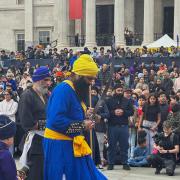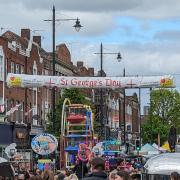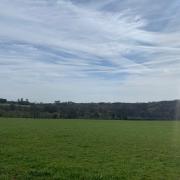
A picture of a black hole, captured by a global team of more than 200 scientists using a network of eight telescopes, is the first visual proof for Einstein's theory of General Relativity. The black hole, located in a distant galaxy, measures 40 billion kilometres across, which is three million times the size of the Earth.
The photographed black hole was said to have been discovered in a galaxy called Messier 87, a massive galaxy in the Virgo galaxy cluster. It shows an intensely bright halo surrounding a circular dark hole. The light from the bright halo is brighter than that of all the billions of other stars in the galaxy combined and is caused by superheated gas falling into the hole.
Heino Falcke, a professor at Radboud University in the Netherlands, who took part in the experiment said, "What we see is larger than the size of our entire Solar System. It has a mass 6.5 billion times that of our Sun."
He continued to describe it as an 'absolute monster' and the 'heavyweight champion of black holes'.
Since no light escapes from black holes, they are supposedly invisible in space. However, a prediction made by Albert Einstein in his theory of General Relativity, stated that in certain circumstances, an outline of a black hole and it's light swallowing event horizon could be seen. This is what can be clearly viewed in the photograph captured by the global collaboratation of scientists.
The photograph of the black hole could potentially open several doors for future astronomy related discoveries. Scientists also hope to soon publicise the image of the supermassive black hole which is in the Milky Way galaxy after it has been fully processed.



























